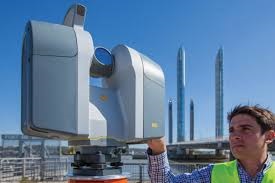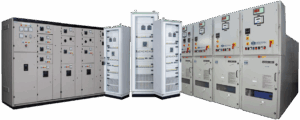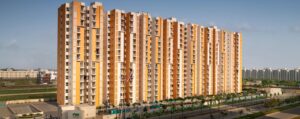Riyadh’s cityscape is evolving at an unprecedented pace. As the capital expands into a global urban hub under Vision 2030, precision, speed, and data-driven planning have become essential. Urban planners across Riyadh are embracing Laser Scanning Service to meet these modern demands. This high-accuracy technology is not just a tool—it’s a cornerstone of sustainable urban development, enabling professionals to create smarter, safer, and more efficient city infrastructure.
Transforming Urban Planning with High-Resolution 3D Data
Urban planning requires a detailed understanding of existing conditions. Laser Scanning Service captures millions of data points in seconds, generating exact 3D replicas of buildings, streetscapes, and land topography.
With this data, planners can:
- Visualize infrastructure in immersive 3D
- Analyze terrain and structural conditions
- Plan developments around utilities and natural features
- Identify risks and opportunities invisible to the naked eye
This level of detail minimizes guesswork and ensures every decision is backed by measurable data, reducing costly redesigns and delays.
Accelerating Smart City Integration in Riyadh
Riyadh’s transformation into a smart city requires intelligent systems integration across utilities, transportation, and public services. Laser Scanning Service plays a pivotal role in building this foundation.
With accurate geospatial data, urban planners can:
- Design IoT-enabled infrastructure layouts
- Ensure alignment of smart utilities with physical surroundings
- Map out underground assets like water, gas, and fiber optics
- Enable future expansions without service disruptions
The service’s precision supports the digital twin initiatives gaining traction across Saudi municipalities.
Reducing Project Risk in Mega Infrastructure Developments
From metro expansions to new highways and green corridors, Riyadh’s infrastructure projects are massive in scale and complexity. Laser Scanning Service ensures that no detail is missed during planning and execution.
Benefits include:
- Clash detection with existing structures
- Improved coordination between contractors and design teams
- Accurate volume and area calculations for excavation or material planning
- Compliance assurance with zoning and safety regulations
Planners who integrate laser scans in their early feasibility studies report fewer change orders and disputes during construction.
Preserving Riyadh’s Cultural Heritage through Digital Documentation
Urban development often threatens historical landmarks. To balance modernization with preservation, planners use Laser Scanning Service to document heritage structures in fine detail.
This process enables:
- Digital archiving of historic facades and interiors
- Creating virtual models for restoration and tourism
- Ensuring new developments respect cultural context and boundaries
- Accurate data for conservation funding and licensing
It empowers the city to protect its heritage while building toward the future.
Enhancing Public Engagement and Stakeholder Transparency
Engaging residents and stakeholders is essential for project approval and long-term success. Laser Scanning Service provides visual clarity that builds trust and secures support.
Urban planners can:
- Create immersive presentations with 3D flythroughs
- Overlay proposed changes on real-world scans
- Host virtual town halls using VR or web platforms
- Answer public concerns with quantifiable insights
This transparency encourages faster decision-making and more informed community input.
Integrating Laser Scanning into Urban Planning Workflows
The adoption of Laser Scanning Service across Riyadh’s planning departments is growing, with streamlined integration into existing tools like AutoCAD, Revit, and GIS platforms.
The typical process includes:
- Site scanning using terrestrial or drone-based LiDAR scanners
- Processing point cloud data into usable 3D models
- Converting models into CAD/BIM formats for design and analysis
- Archiving or syncing data with digital twin repositories
This workflow enables continuous updates and agile responses to changing development needs.
Cost-Effective Long-Term Urban Strategy
While some perceive scanning as costly upfront, the long-term ROI is clear. Laser Scanning Service reduces errors, avoids rework, and shortens project lifecycles.
Key cost-saving benefits:
- Eliminating site revisits with complete digital data
- Preventing expensive structural conflicts
- Faster permitting with detailed submittals
- More accurate budgeting with quantifiable metrics
Cities like Riyadh that invest in these technologies today are future-proofing their infrastructure against rising demand and climate variability.
Conclusion
Riyadh’s urban planners are leading the region in smart development, and Laser Scanning Service is a core enabler of their success. From streamlining mega-projects and preserving heritage to powering smart cities and engaging communities, this technology delivers measurable results. By embedding laser scanning into every phase of planning, Riyadh is setting a new global benchmark for precision, sustainability, and innovation in urban design.
FAQs
- What is the accuracy level of a Laser Scanning Service?
Most services offer millimeter-level accuracy, ideal for both small sites and vast city blocks. - Is Laser Scanning Service only for new developments?
No. It’s widely used in renovation, retrofitting, and preservation of existing buildings and sites. - Can laser scanning be used on busy public roads or markets?
Yes. Modern scanners are fast and non-intrusive, often capturing data without disrupting foot or vehicle traffic. - Do planners need special software to use scan data?
Point clouds can be integrated with popular CAD and GIS tools. Many providers also deliver pre-processed models in accessible formats. - How does this help align with Saudi Vision 2030?
Laser scanning supports efficient infrastructure, sustainable planning, and digital transformation—all pillars of Vision 2030.
For more information: AMC Engineer BIM Services






